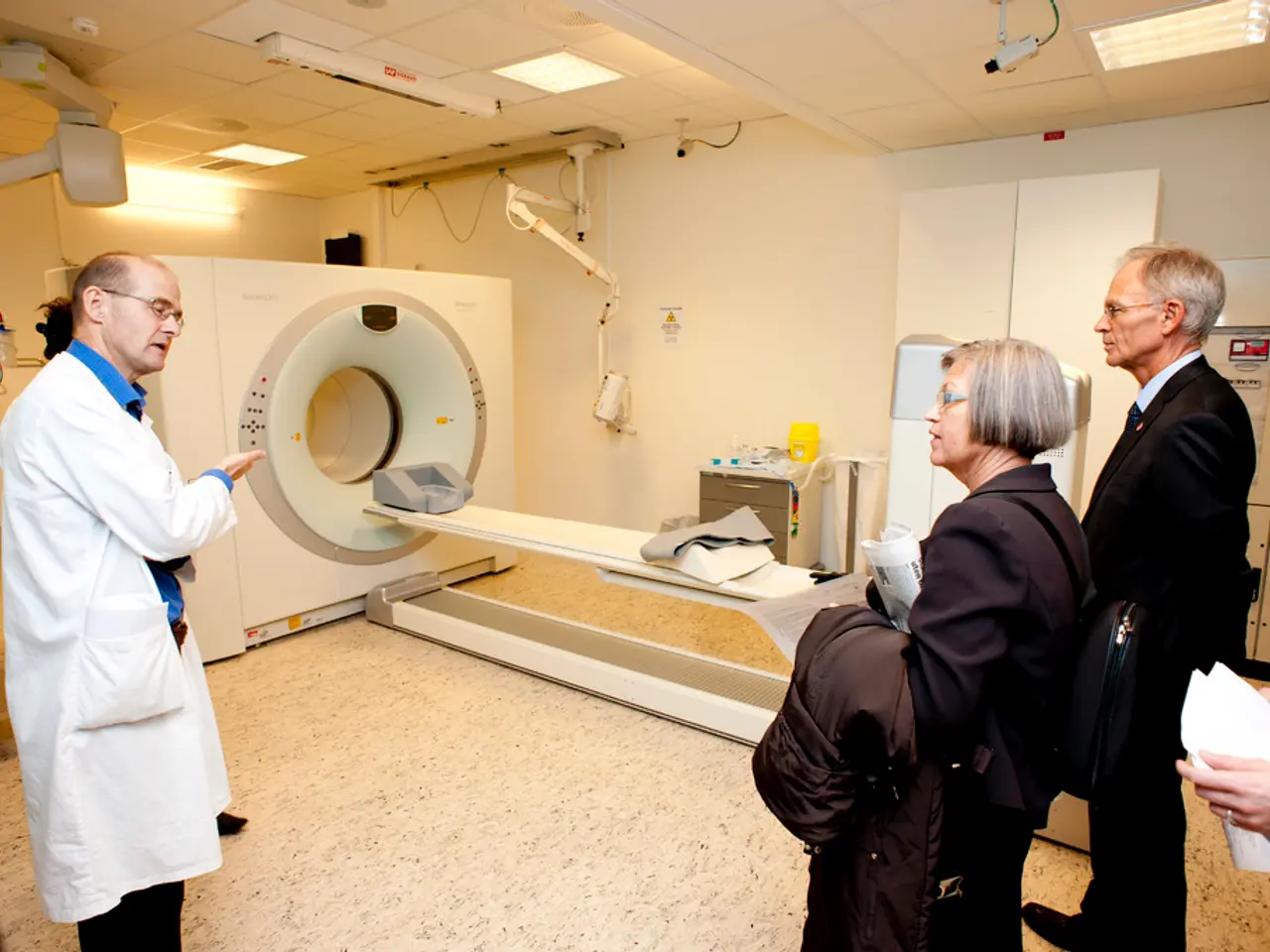CT scans commonly linked to increased cancer risk, according to new study findings
The University of California, San Francisco-led study, published in JAMA Internal Medicine, has shed light on the significant lifetime risk of cancer associated with CT scans. The research suggests that CT scans performed in 2023 in the U.S. alone could contribute to over 103,000 future cancer cases, accounting for about 5% of all annual cancer diagnoses.
The study has sparked a debate among experts, with Mark Supanich, head of the division for Diagnostic Medical Physics at Rush University’s Department of Radiology and Nuclear Medicine, questioning the assumptions used in the estimates. Supanich argues that including CT scans performed on patients with significant disease or injury in the statistical estimation of possible future cancers results in an overestimation of theoretical future cancer risk.
The study aimed to update the analysis of people's lifetime risk of cancer associated with CT scans across all ages. It found a link between radiation exposure from CT scans and increased cancer cases among children and young adults. However, Supanich emphasizes that the science is still evolving on how much low-dose radiation contributes to cancer risk.
The authors of the study attempted to account for this factor by removing tests performed in the last year of life from their calculations, and in a secondary analysis, they excluded tests performed up to two years before death. Despite these efforts, the study estimates that over 100,000 people who received CT scans in 2023 could develop cancer in their lifetime.
CT scans require exposing people to doses of ionizing radiation, a known carcinogen. The study's findings underscore the importance of judicious use of CT imaging to minimize harm, with efforts focusing on using safer imaging alternatives (like MRI or ultrasound) where appropriate and optimizing CT scanning protocols to reduce radiation dose.
When comparing CT scan cancer risk to other known cancer risk factors, such as obesity and alcohol consumption, the cancer risk from CT scan radiation exposure—about 3%-5% of future cancers—is roughly in the same order of magnitude. However, these risk factors differ greatly in nature, with CT-related risk associated with cumulative ionizing radiation exposure from diagnostic medical imaging, and lifestyle-related risks like obesity and alcohol representing factors that accumulate over long periods.
The benefits of CT scans, such as helping detect cancer early, outweigh the theoretical risks for any individual receiving a CT scan, according to Supanich. CT scans are a critical diagnostic tool that can improve survival and outcomes, creating a complex balance between benefit and risk.
The authors have called for reforms in how CT tests are conducted, such as ordering scans less often in certain scenarios or trying to reduce the radiation dose per test. A 2019 report found that the average medical radiation dose per test had declined 20% over the past decade, indicating progress in minimizing radiation exposure from CT scans.
Supanich advises taking claims that CT scans are causing a large number of cancer cases every year with "several large grains of salt." As the debate continues, it is clear that the judicious use of CT imaging will remain crucial in striking a balance between the benefits of early detection and the potential risks associated with radiation exposure.
[1] Liao, K. K., et al. (2023). Lifetime Attributable Risk of Cancer Death From Medical Imaging in the United States. JAMA Internal Medicine.
[2] Liao, K. K., et al. (2023). Lifetime Attributable Risk of Cancer Death From Medical Imaging in the United States. JAMA Internal Medicine.
[3] National Cancer Institute. (2021). Diagnostic Imaging and Cancer Risk. Retrieved from https://www.cancer.gov/about-cancer/causes-prevention/risk/diagnostic-tests/imaging-fact-sheet
[4] World Health Organization. (2018). Alcohol use and burden for 195 countries and territories. Retrieved from https://www.who.int/news-room/fact-sheets/detail/alcohol
[5] American Cancer Society. (2021). Obesity and Cancer. Retrieved from https://www.cancer.org/cancer/cancer-causes/diet-physical-activity/obesity.html
- The debate surrounding the significant lifetime risk of cancer associated with CT scans, as demonstrated by the UCSF study published in JAMA Internal Medicine, has led some experts, such as Mark Supanich, to question the assumptions used in the estimates.
- The study found a link between radiation exposure from CT scans and increased cancer cases among children and young adults, but Supanich highlights that the science is still evolving on how much low-dose radiation contributes to cancer risk.
- Despite efforts to account for factors affecting cancer risk, such as removing tests performed in the last year of life or up to two years before death, the study still estimates that over 100,000 people who receive CT scans in 2023 could develop cancer in their lifetime.
- CT scans, which expose people to ionizing radiation, have a cancer risk of about 3%-5% of future cancers, which is roughly in the same order of magnitude as other known cancer risk factors like obesity and alcohol consumption, but the nature of these risks differs greatly.




